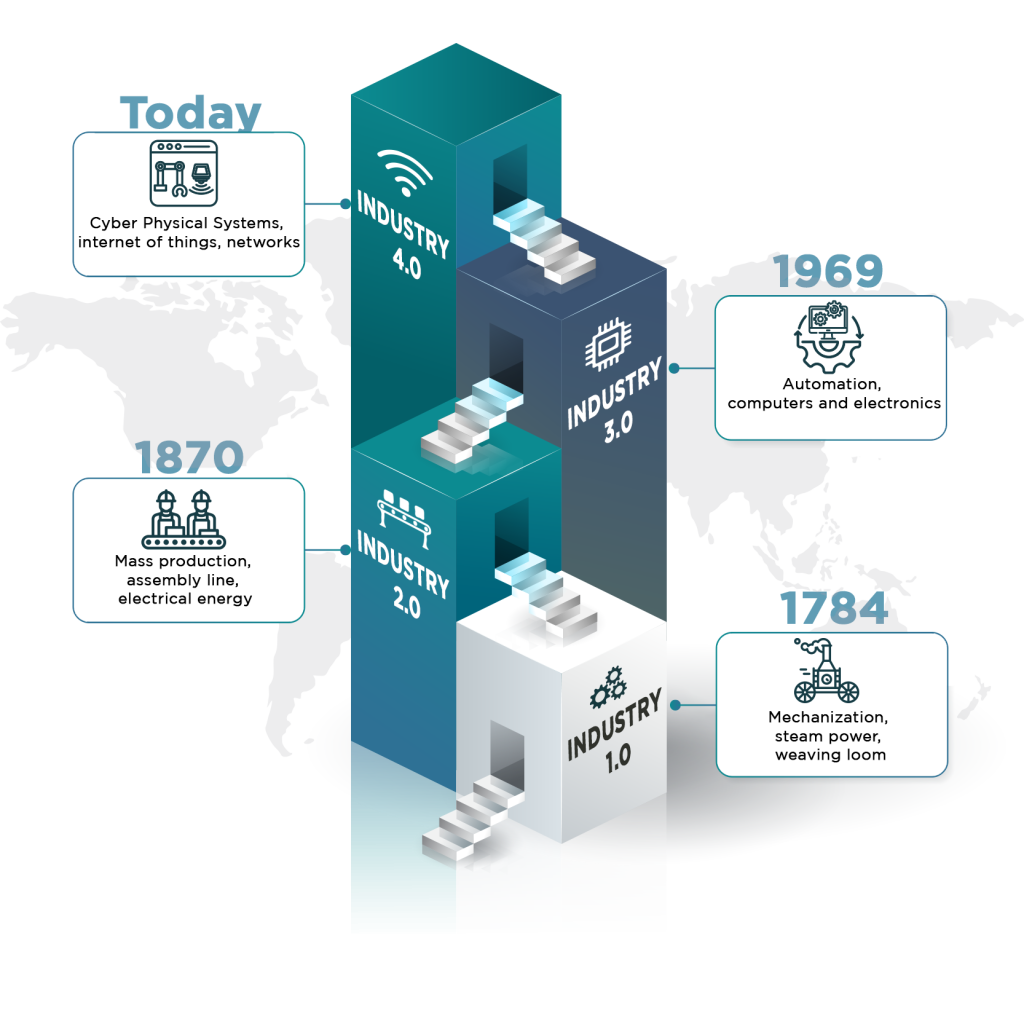1.5 Development of Operations Management
Operations in some form have been around as long as human endeavour itself, but, in manufacturing at least, it has changed dramatically over time, and there are three major phases – craft manufacturing, mass production and the modern period. Let’s look at each of these briefly.
Craft Manufacturing: The Hands-On Era
Imagine skilled artisans meticulously building furniture or clocks. That’s craft manufacturing in a nutshell. This system, where craftspeople made unique products for individual customers, thrived for centuries. Skills were passed down through apprenticeships and workshops buzzed with activity. While ideal for small-scale production, it struggled with competition in a growing world.
Mass Production: The Age of Efficiency (1910 – 1980)
The 19th century ushered in a revolution: mass production. Here, the focus shifted to churning out large quantities of standardized goods at lower costs. Think assembly lines and interchangeable parts. This innovation came with a trade-off – less variety for consumers who got what was offered.
Key innovations of mass production:
- Standardized parts: Imagine car parts fitting seamlessly across models. This American system streamlined production and reduced costs.
- Scientific Management: Frederick Taylor aimed to find the “one best way” to complete tasks, breaking them down for maximum efficiency. This approach, while efficient, raised concerns about worker well-being.
- The Assembly Line: Henry Ford perfected this concept, bringing the product (cars) to the workers, further boosting production speed and lowering costs.
The Modern Period: Adapting to Change (1995 – 2015)
By the 1970s, mass production began to show its limitations. Consumer preferences were diversifying, and markets were changing rapidly. Enterprising Japanese manufacturers challenged the status quo with innovative approaches like Total Quality Management (TQM) and Just-in-Time (JIT) production, emphasizing quality and efficiency.
Modern Manufacturing Paradigms
Several popular models have emerged in this era:
- Flexible Specialization: Small firms collaborate in networks to focus on specific stages of production, creating a whole product. This requires strong communication and long-term partnerships.
- Lean Production: Inspired by Toyota’s success, this approach eliminates waste and minimizes inventory, leading to faster production and lower costs.
- Mass Customization: Imagine getting a customized product at mass-produced prices. This concept is becoming a reality with advancements in technology and automation.
- Agile Manufacturing: Rapidly adapting to shifting market demands is key here. Technology plays a crucial role in achieving this agility.
Industry 4.0 – Fourth Industrial Revolution (4IR)
According to McKinsey & Company (2024), the Fourth Industrial Revolution (4IR) builds upon the innovations of the Third Industrial Revolution, also known as the digital revolution. The digital revolution spanned from the 1950s to the early 2000s and introduced technologies like computers, the Internet, and various electronics. Industry 4.0 takes these advancements further by leveraging four key disruptive technology categories across the entire value chain:
- Connectivity, Data, and Computational Power: Examples include cloud technology, the Internet, blockchain, and sensor networks.
- Analytics and Intelligence: This category encompasses advanced analytics, machine learning, and artificial intelligence.
- Human–Machine Interaction: Technologies such as virtual reality (VR), augmented reality (AR), robotics, and autonomous guided vehicles enhance interaction between humans and machines.
- Advanced Engineering: Additive manufacturing (such as 3-D printing), renewable energy solutions and nanoparticles contribute to cutting-edge engineering practices.
These technologies collectively drive Industry 4.0, revolutionizing how we approach manufacturing, production, and overall business processes.
In various ways, these approaches combine the high volume and low cost associated with mass production with product customization and high levels of innovation and quality associated with craft production. As technology continues to evolve, we can expect even more exciting advancements in how we make things in the future.

“Introduction to Operations Management” from Introduction to Operations Management Copyright © by Hamid Faramarzi and Mary Drane is licensed under a Creative Commons Attribution-NonCommercial-ShareAlike 4.0 International License, except where otherwise noted.—Modifications: used section Development of Operations Management, some paragraphs rewritten; added section on Industry 4.0

